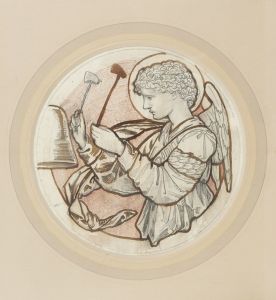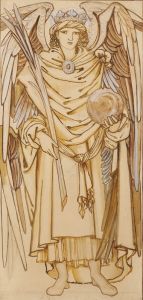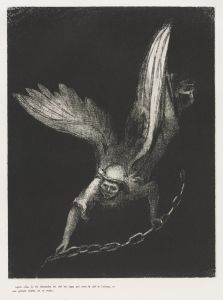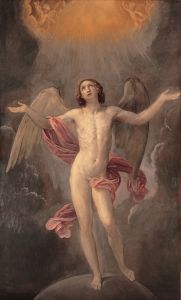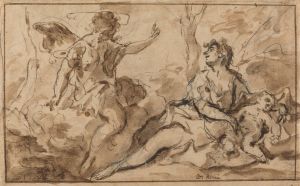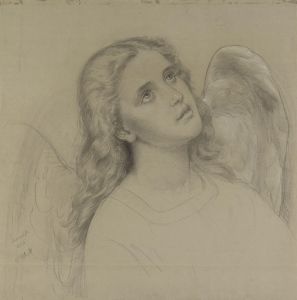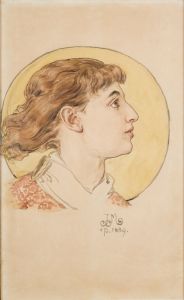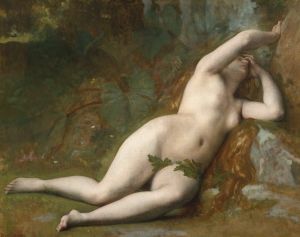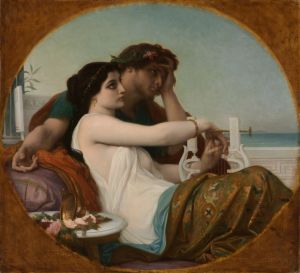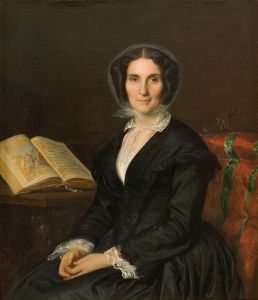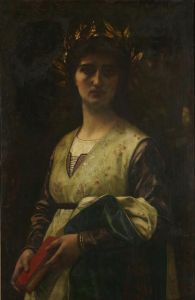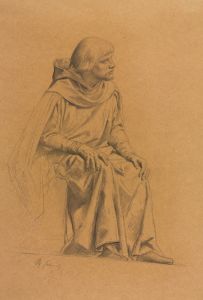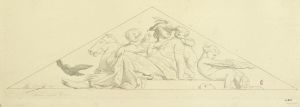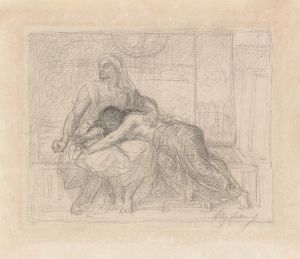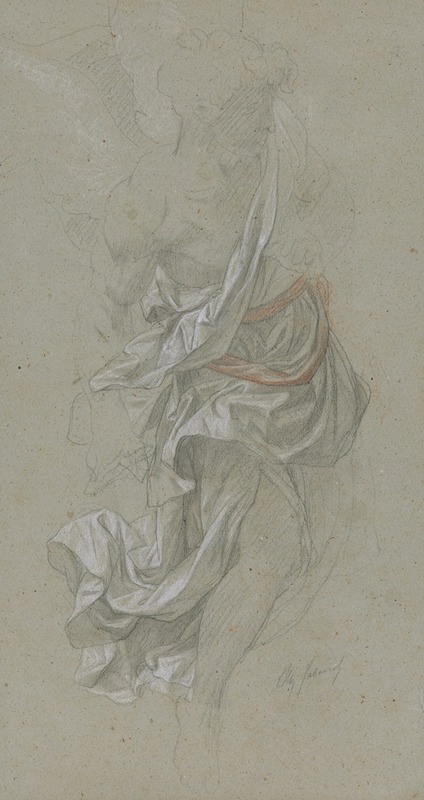
Drapery study for An Angel Attending God the Father, in Le Paradis Perdu
A hand-painted replica of Alexandre Cabanel’s masterpiece Drapery study for An Angel Attending God the Father, in Le Paradis Perdu, meticulously crafted by professional artists to capture the true essence of the original. Each piece is created with museum-quality canvas and rare mineral pigments, carefully painted by experienced artists with delicate brushstrokes and rich, layered colors to perfectly recreate the texture of the original artwork. Unlike machine-printed reproductions, this hand-painted version brings the painting to life, infused with the artist’s emotions and skill in every stroke. Whether for personal collection or home decoration, it instantly elevates the artistic atmosphere of any space.
"Drapery study for An Angel Attending God the Father, in Le Paradis Perdu" is a preparatory drawing by the French academic painter Alexandre Cabanel. Born on September 28, 1823, in Montpellier, France, Cabanel was a prominent figure in the 19th-century art world, known for his classical style and meticulous attention to detail. He was a leading exponent of the academic art tradition, which emphasized traditional techniques and subjects, often drawing inspiration from mythology, history, and religion.
The drawing in question is a study for one of the figures in Cabanel's larger work, "Le Paradis Perdu" (Paradise Lost), which is based on John Milton's epic poem of the same name. Milton's "Paradise Lost," first published in 1667, is a seminal work of English literature that explores the biblical story of the Fall of Man, depicting the rebellion of Satan and the expulsion of Adam and Eve from the Garden of Eden.
Cabanel's "Le Paradis Perdu" was completed in 1863 and is one of his most celebrated works. The painting captures the dramatic and emotional intensity of Milton's narrative, showcasing Cabanel's skill in rendering the human form and his ability to convey complex theological themes through visual art.
The "Drapery study for An Angel Attending God the Father" is a detailed study focusing on the folds and flow of the angel's garments. Such studies were common practice among academic painters, who often created numerous preparatory sketches and studies to perfect the composition and details of their final works. These studies allowed artists to experiment with different poses, lighting, and textures before committing to the final painting.
In this particular study, Cabanel demonstrates his mastery of drapery, capturing the delicate and intricate folds of the fabric with precision. The drawing likely served as a reference for the angelic figure's clothing in the final painting, ensuring that the drapery would appear natural and lifelike. The attention to detail in the study reflects Cabanel's dedication to achieving a high level of realism and his commitment to the academic principles of art.
Cabanel's work, including his preparatory studies, was highly regarded during his lifetime. He received numerous accolades and was a member of the prestigious Académie des Beaux-Arts. His influence extended beyond his own work, as he also served as a professor at the École des Beaux-Arts in Paris, where he mentored many young artists.
Today, Cabanel's "Drapery study for An Angel Attending God the Father, in Le Paradis Perdu" is appreciated not only for its technical excellence but also as an insight into the artist's creative process. It provides a glimpse into the meticulous preparation that underpinned his larger compositions and highlights the importance of studies in the academic art tradition. The drawing remains an important piece for understanding Cabanel's approach to art and his contribution to 19th-century academic painting.





